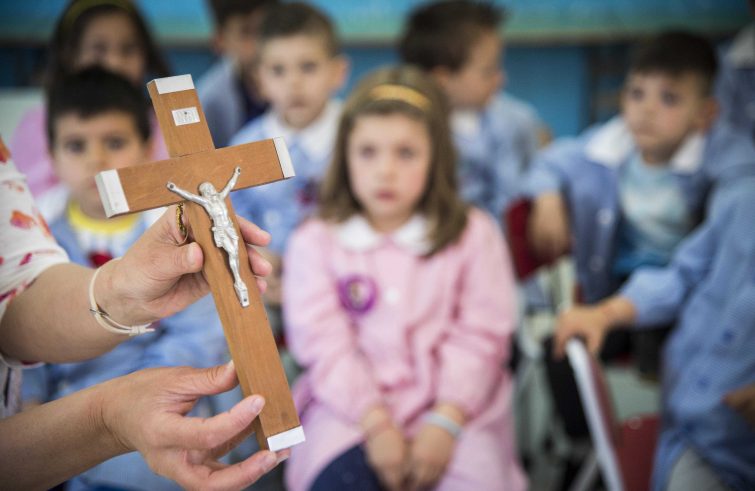
“Dear students, we encourage you to attend religious education classes at school. Take advantage of this opportunity to learn more about God. If you encounter difficulties, try to overcome them. By choosing to attend religious education classes, you will be offering a beautiful testimony of your faith”: these were the words of the Polish Bishops at the opening of the new school year, which in Poland traditionally begins at the beginning of September.
Discordant voices. The sound of the school bell is this time accompanied by the discordant voices of the Minister of Education, Barbara Nowacka; the President of the Republic, Andrzej Duda; and the bishops. Their comments concern the modalities of religious instruction in schools of all levels. In response to the protests of the bishops, the indignation of a section of civil society and the criticism of the Head of State, the government has announced its intention to limit the two weekly optional religious instruction classes to just one hour, starting in 2025. This will facilitate the merging of different classes in the case of small groups of students and remove the religious instruction grade from the annual final examination.
Believers, pracising Catholics. Religious instruction was reinstated in Polish schools over three decades ago, following a demand from the majority of civil society. At the time of the Solidarność uprisings, there was also a call for the broadcasting of Sunday liturgies on radio and television, hitherto prohibited by the Communist regime on a par with religious instruction.
In the last two decades, however, as evidenced by numerous studies,
the number of Polish citizens who identify as Catholic has decreased from 96% to 88%,
the number of practicing Catholics has declined by approximately one-third, and only 9% of the population self-identify as “deeply religious” Catholics.
Decrease in the number of registered students. Data from the Church Statistics Institute and the Ministry of Education indicate a steady decline in the number of students attending religious education classes. While approximately 80% of students in primary schools are registered, the figure drops to below 60% in secondary schools, particularly in Warsaw, Gdańsk, Wrocław and other major urban centres. In some regions, the proportion of students who opt to attend religious instruction in secondary schools is no higher than 35 per cent. Some commentators have suggested that the removal of the religious instruction mark from the overall average yearly grade may precipitate a further decline in the number of students attending religious instruction.
Fluctuating figures. The authors of the report concerning the state of the Polish Church, published by the Kai agency, posit that the phenomenon of secularisation affects young people under the age of 24 the most. In 2022, only 4% of young Poles identified as “strong believers”.
A significant proportion of young people (27%) consider themselves non-believers.
This phenomenon is, to some extent, corroborated by the decline in the number of students enrolled in seminaries. In the year 2000, the number of young seminarians in Poland was approximately 7,000. At the beginning of 2023, the number fell to two thousand, which resulted in the closure of several prestigious institutes, including the one in Łowicz, which had been regarded for decades as one of the most important centres of Polish Catholicism.
In search of God. As Kai reports, young people of the so-called ‘4.0 generation’, thousands of whom attended numerous religious festivals and events during the holidays and thus had the opportunity to “experience the energy of a living Church”,
expressed a desire to discover God through discussions that facilitate a rediscovery of their own faith.
It is their desire that the Church provide “assistance in situations of crisis” and “guidance throughout the course of their lives.”
Priests and teachers. The Catholic Church in Poland currently comprises approximately 35,000 priests, serving the country’s 10,352 parishes, which are distributed among 45 dioceses. Additionally, some serve as school teachers, and together with lay religious education teachers, they now expect the ongoing dispute to reach a final resolution. The Archbishop of Warsaw, His Eminence. Kazimierz Nycz, who was responsible for catechetical matters within the Church-State Dialogue Commission for a period of 15 years, is concerned that, in the absence of an agreement on religious instruction, chaos may ensue and permeate schools throughout the country.











